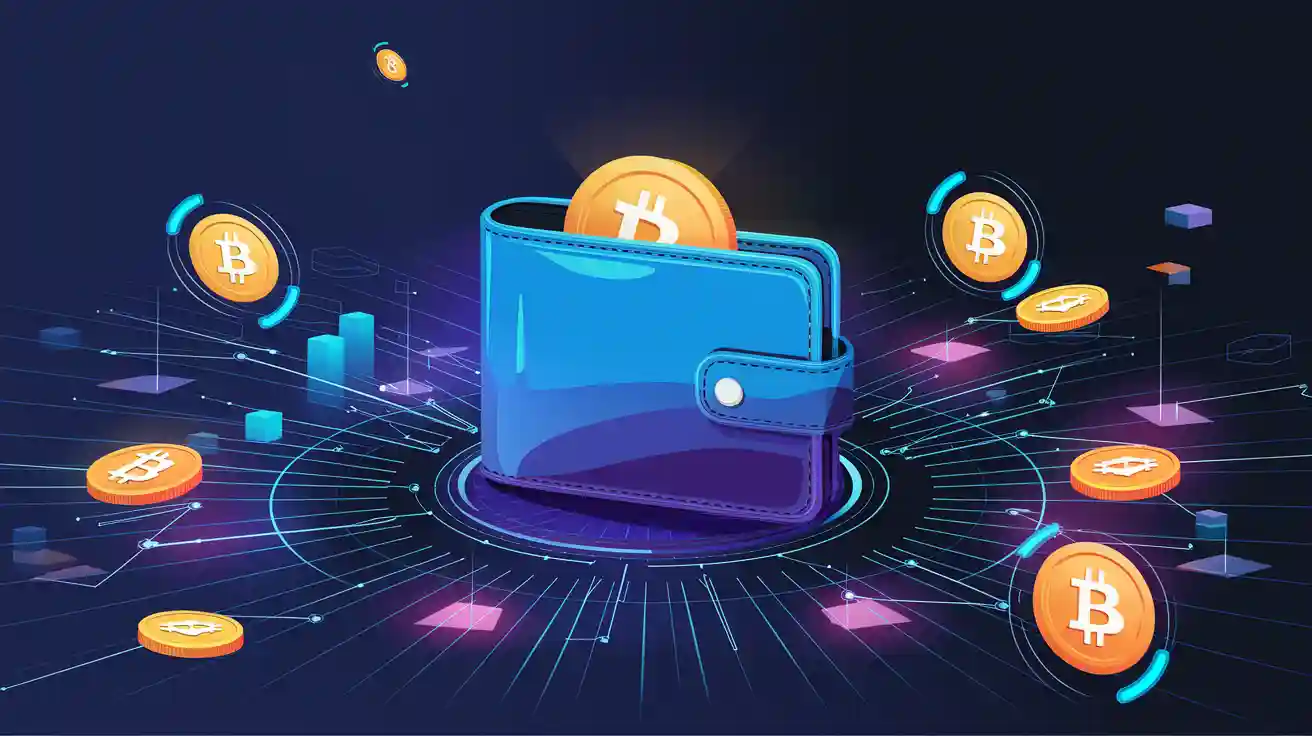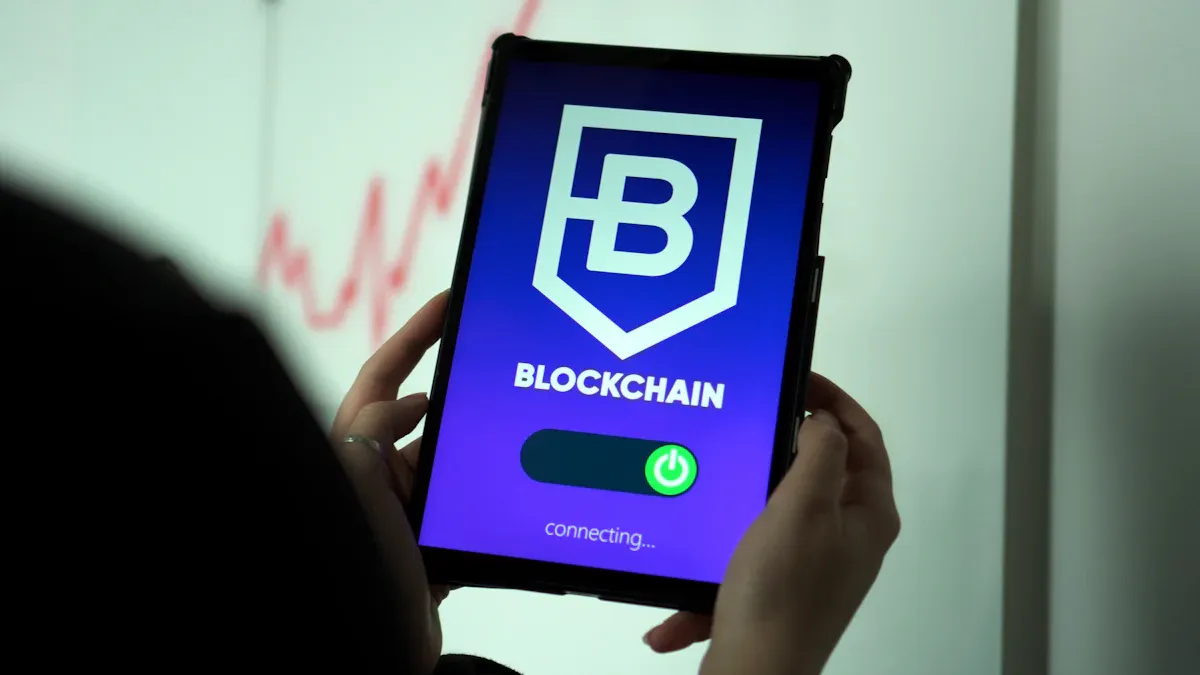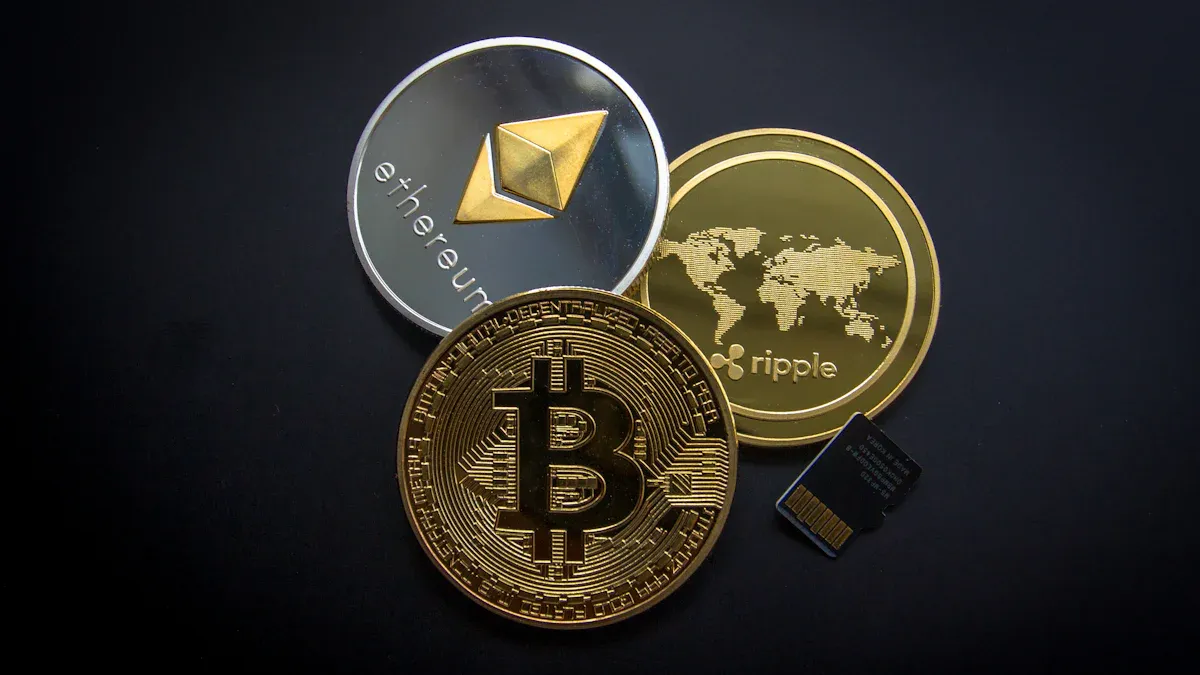How Often Should You Update Your Cryptocurrency Wallet Software?
2025-04-08 10:50:40
Cryptocurrency wallet software plays a critical role in safeguarding digital assets. Regular updates ensure the highest level of security by addressing potential vulnerabilities. Hackers often exploit outdated software, putting funds at risk. Staying informed about updates and acting promptly minimizes these risks. Users frequently ask how often should you update your cryptocurrency wallet software. The answer depends on the wallet type and developer recommendations, but prioritizing updates is essential for maintaining security and protecting assets.
Why Regular Updates Are Essential for Crypto Wallet Security

Protecting Against Security Threats
Regular updates play a vital role in maintaining crypto security. Hackers constantly develop new methods to exploit vulnerabilities in outdated software. By updating wallet software, users can protect their cryptocurrency from these emerging threats.
To enhance security, users should follow these best practices:
- Use a hardware wallet to store private keys offline.
- Enable a passphrase for an additional layer of protection.
- Avoid storing seed phrases digitally to reduce theft risks.
- Use a multi-signature wallet to require multiple approvals for transactions.
- Verify apps and updates to ensure they come from trusted sources.
- Limit device access to minimize exposure to malware.
These measures, combined with timely updates, significantly reduce the risk of hacks and malware attacks.
Ensuring Smooth Blockchain Compatibility
Blockchain networks frequently undergo upgrades to improve performance and security. Wallet software must adapt to these changes to ensure compatibility. For example, the BNB Chain's Pascal upgrade highlighted the importance of seamless transitions during major blockchain updates. Wallets that fail to update may experience functionality issues, leading to user dissatisfaction and potential security risks.
By staying updated, wallets can maintain smooth operations and align with the latest blockchain advancements. This ensures users can continue to transact securely and efficiently.
Accessing New Features and Enhancements
Updates often introduce valuable features and enhancements that improve the user experience. For instance, recent wallet updates have added support for new blockchains, enhanced security measures, and improved transaction processes.
| Version | Date | New Features and Enhancements |
|---|---|---|
| 5.15 | September 26, 2024 | - Markets feature for real-time cryptocurrency data tracking. - Staking support for Solana, Cosmos, and Tron. - Enhanced onboarding process with improved visuals. - Full Spanish language support. |
| 5.14 | September 2, 2024 | - Support for new blockchains: BLAST, Cyber, and Mantle. - Customizable transaction fees in the Kaspa network. |
| 5.20 | February 5, 2025 | - New blockchain support: Fact0rn, Dione EVM, and Bitrock EVM. - Security enhancements and improved swap fee calculation. |
| 5.21 | March 7, 2025 | - Support for Alephium, Sonic, and ApeChain. - New features for swap transactions and caching balances for performance. |
By updating their wallets, users gain access to these innovations, enhancing both functionality and crypto security.
Risks of Not Updating Your Cryptocurrency Wallet Software
Increased Vulnerability to Hacks and Malware
Outdated wallet software often lacks the latest security patches. Hackers exploit these vulnerabilities to gain unauthorized access to cryptocurrency wallets. Without regular updates, users expose their funds to malware attacks and phishing schemes. Cybercriminals frequently target wallets with known flaws, making them an easy target.
To reduce risks, users should prioritize updating their wallets as soon as new versions become available. Developers release updates to address emerging threats and improve wallet defenses. Staying proactive ensures that wallets remain secure against evolving cyberattacks.
Potential Loss of Funds Due to Software Bugs
Failing to update wallet software can lead to bugs that disrupt functionality. These issues may result in the loss of access to funds. Several users have reported incidents where outdated software caused significant problems:
- Users were locked out of their accounts after a software update.
- One user was logged out unexpectedly and prompted to create a new account, leading to an empty wallet.
- Another user discovered missing cryptocurrency holdings, including Ethereum, after logging in post-update.
Such incidents highlight the importance of keeping wallet software up to date. Regular updates minimize the risk of bugs that could jeopardize access to funds.
Incompatibility with Blockchain Network Updates
Blockchain networks frequently undergo upgrades to enhance performance and security. Wallets that fail to update may become incompatible with these changes. This can result in transaction failures or the inability to access funds. For example, users may experience delays or errors when attempting to send or receive cryptocurrency.
By updating their wallets, users ensure compatibility with the latest blockchain protocols. This allows them to transact smoothly and avoid disruptions caused by outdated software. Staying aligned with network updates is essential for maintaining wallet functionality.
How Often Should You Update Your Cryptocurrency Wallet Software?
Factors That Influence Update Frequency
Several factors determine how often users should update their crypto wallet software. These include government regulations, the growing interest in digital currencies, and the need for transparency in payment systems.
| Factor | Description |
|---|---|
| Government Regulations | Enforcement of regulations may hinder hardware wallet growth due to privacy and security concerns. |
| Digital Currency Inclination | Rising interest in digital currencies drives market growth by offering faster transactions and reduced risks. |
| Need for Transparency | Transparency demands in payment systems expand the market, as crypto wallets ensure secure transactions. |
Users should monitor these factors to understand how they influence the frequency of software updates. For instance, regulatory changes may prompt developers to release updates to comply with new standards. Similarly, advancements in digital currency technology often lead to updates that enhance wallet functionality.
Hot Wallets vs. Cold Wallets: Update Needs
Hot wallets and cold wallets differ in their update requirements. Hot wallets, connected to the internet, require frequent updates to address security vulnerabilities. Developers often release updates to protect these wallets from evolving cyber threats.
Cold wallets, stored offline, have fewer update needs. However, users should still check for updates periodically. Updates for cold wallets often include compatibility improvements or bug fixes. By staying informed, users can ensure their wallets remain secure and functional, regardless of their type.
Following Developer Recommendations for Updates
Developers provide guidance on how often users should update their cryptocurrency wallet software. These recommendations are based on the wallet's design, security needs, and compatibility with blockchain networks. Users should subscribe to official developer channels to receive timely notifications about updates.
Ignoring these recommendations can lead to security risks or functionality issues. For example, outdated wallets may fail to process transactions on upgraded blockchain networks. Following developer advice ensures that wallets remain secure and compatible with the latest technologies.
Best Practices to Store Crypto Safely While Updating

Verifying the Authenticity of Updates
Ensuring the authenticity of updates is a critical step to keep your crypto wallet safe. Cybercriminals often create fake updates to trick users into downloading malicious software. To avoid this, users should only download updates from official sources, such as the wallet developer's website or verified app stores. Checking the digital signature of the update file can also confirm its legitimacy.
Additionally, waiting a few days after an update's release can help users assess its reliability. Community feedback during this period often highlights potential issues or security concerns. This cautious approach minimizes risks and ensures that updates enhance the wallet's security features rather than compromise them.
Backing Up Your Wallet Before Updating
Backing up wallet data is essential to store crypto safely during updates. A recovery phrase, also known as a seed phrase, is the cornerstone of wallet security. It allows users to regain access to their funds if the device is lost or damaged. Storing this phrase on paper in a secure location reduces the risk of hacking.
Creating multiple physical copies of the recovery phrase and storing them in different secure locations adds an extra layer of protection. Users should avoid digital storage methods, as they are more vulnerable to cyberattacks. By prioritizing backups, users can safeguard their assets against potential data loss during the update process.
Timing Updates Strategically to Avoid Risks
Strategic timing of updates plays a vital role in maintaining wallet security. Installing updates immediately after release may expose users to unforeseen bugs or vulnerabilities. Waiting about a week allows time for developers to address any issues reported by the community.
Users should also schedule updates during periods of low transaction activity. This reduces the risk of disruptions or errors that could occur during the update process. By timing updates carefully, users can ensure their wallets remain functional and secure while benefiting from the latest security features.
Testing Updates on a Secondary Device (if applicable)
Testing updates on a secondary device can help users avoid potential risks associated with new software versions. This approach allows them to verify the update's functionality and compatibility without jeopardizing their primary wallet or funds. It is especially useful for users managing significant amounts of cryptocurrency or relying on their wallets for frequent transactions.
Tip: A secondary device can be an old smartphone, tablet, or computer that is not used for daily activities. This reduces the risk of exposing sensitive data to potential vulnerabilities.
Steps to Test Updates Safely
- Install the Update on the Secondary Device
Download the latest wallet software version from the official source. Ensure the device is secure and free from malware before proceeding. - Import a Test Wallet
Create a new wallet or import a wallet with minimal funds. This ensures that any issues during testing will not affect significant assets. - Perform Basic Transactions
Test sending and receiving small amounts of cryptocurrency. Verify that the transactions process smoothly and the wallet functions as expected. - Check for Bugs or Errors
Monitor the wallet for any unusual behavior, such as crashes, delays, or incorrect balances. Report any issues to the developer for resolution.
Benefits of Testing Updates
Testing updates on a secondary device provides peace of mind. Users can confirm the update's reliability before applying it to their primary wallet. This minimizes the risk of losing access to funds or encountering critical errors. Additionally, it allows users to familiarize themselves with new features or interface changes in a low-risk environment.
By adopting this practice, users can enhance their wallet security and ensure a smooth transition to updated software versions.
Staying Informed About Crypto Wallet Updates
Subscribing to Official Developer Channels
Staying connected with official developer channels is one of the most reliable ways to receive updates about cryptocurrency wallet software. Developers often use these platforms to announce new releases, security patches, and compatibility upgrades. Users can subscribe to newsletters, follow social media accounts, or join forums hosted by wallet creators.
Tip: Avoid clicking on update links from emails or pop-ups. Instead, open the wallet software directly to check for updates or verify them through official browser extension stores if using a browser wallet.
Regularly monitoring these channels helps users stay ahead of phishing attacks. Cybercriminals often exploit fake update notifications to install malware. By relying on official sources, users can reduce the risk of falling victim to such schemes.
Joining Crypto Communities for Update Alerts
Crypto communities provide valuable insights into wallet updates and security practices. Platforms like Reddit, Telegram, and Discord host active discussions where users share experiences and alert others about potential threats. Engaging in these communities allows users to learn about the latest cybersecurity trends and wallet vulnerabilities.
Community discussions often highlight phishing attacks targeting wallet users. Members share tips on identifying suspicious activity, such as unauthorized transactions or fake update links. Developing an incident response plan based on community advice can further enhance wallet security.
Note: Advanced security tools, such as real-time threat detection systems, can complement community insights by identifying unusual wallet activity early.
Setting Up Notifications for Critical Updates
Notification systems play a crucial role in ensuring users never miss critical wallet updates. Features like live monitoring and automatic alerts enhance security by tracking wallet activity and notifying users of unusual patterns.
| Feature | Benefit |
|---|---|
| Live Monitoring | Tracks wallet activity in real time to identify unusual patterns. |
| Automatic Alerts | Sends instant notifications for dubious purchases or unauthorized access attempts. |
| Address Poisoning Detector | Recognizes suspicious dust transactions and alerts users to prevent threats. |
Tailored alerts for suspicious addresses help users stay informed about phishing attacks. Instant notifications also support compliance reviews, ensuring wallets remain secure and functional. Setting up these systems reduces the risk of missing updates that patch vulnerabilities or improve compatibility.
Regular updates are essential for maintaining the security of cryptocurrency wallets. They protect digital assets from vulnerabilities and ensure smooth functionality. Wallet type and developer recommendations play a significant role in determining how often updates are needed. Staying informed about updates helps users avoid risks and keep their wallets compatible with blockchain advancements.
By prioritizing updates and following safe practices, users can safeguard their funds effectively. Backing up wallets, verifying update authenticity, and testing updates on secondary devices are practical steps to enhance wallet reliability. These measures ensure a secure and seamless crypto experience.
FAQ
What is phishing, and how does it affect cryptocurrency wallets?
Phishing is a cyberattack where hackers trick users into revealing sensitive information, such as wallet credentials. It often involves fake websites or emails that mimic legitimate sources. Falling victim to phishing can result in unauthorized access to cryptocurrency wallets and loss of funds.
How can users identify phishing attempts targeting their wallets?
Users can spot phishing attempts by checking for suspicious links, spelling errors, or unusual requests for personal information. Always verify the sender's identity and avoid clicking on unverified links. Using official wallet websites or apps reduces the risk of falling for phishing schemes.
Are hardware wallets immune to phishing attacks?
Hardware wallets provide strong security but are not entirely immune to phishing. Hackers may target users through fake firmware updates or phishing emails. Verifying update authenticity and avoiding untrusted sources can help protect hardware wallets from phishing threats.
Can phishing attacks be prevented with multi-signature wallets?
Multi-signature wallets add an extra layer of security by requiring multiple approvals for transactions. While they reduce the risk of unauthorized access, they cannot fully prevent phishing. Users must remain vigilant and follow best practices to avoid phishing scams.
What steps should users take after falling victim to phishing?
Users should immediately transfer funds to a secure wallet, change passwords, and enable two-factor authentication. Reporting the phishing incident to wallet developers and relevant authorities can help prevent further damage and alert others to the threat.